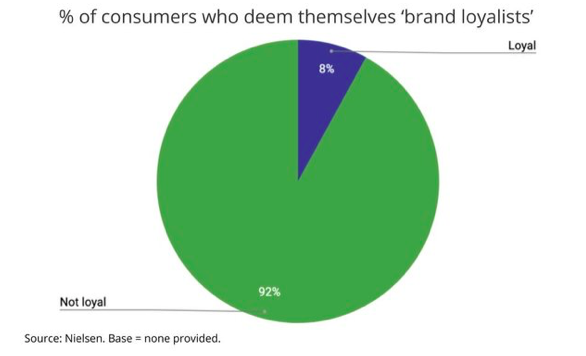Consumer Disloyalty Is The New Normal
 }
}
Consumers are also aware and engaged with broader competitive sets than ve years ago. Amid the growing product repertoires, consumers are more careful about those they are associated with and ready to walk away from brands that do not resonate with their lives and ideals.
A further multiplier to the equation we’re to consider is that a quarter (24%) of global consumers are reviewing products across broader ranges than ever. We call this group “conscious considerers” and they’re important because, even though they are choosing more widely than ever across brands, they tell us they prefer to stay with those they’ve tried in the past. It will take more to convince these consumers to change, but they still send signals of disloyalty that are ringing louder every day. Marketers can move their decisions to force disloyalty, especially if their current brands haven’t given them compelling reasons, conditions or characteristics to stay.
What is also fundamentally evident, is that consumers are mostly less strongly bound to familiar brands, which means brand halo eects risk losing even more power over time. This is good news for new, unknown brands but a signal to the well-known, heritage brands, that the trust ties are loosening. For brands of all sizes, marketing to the growing traits of disloyalty, instead of the declining rates of loyalty will be key.


